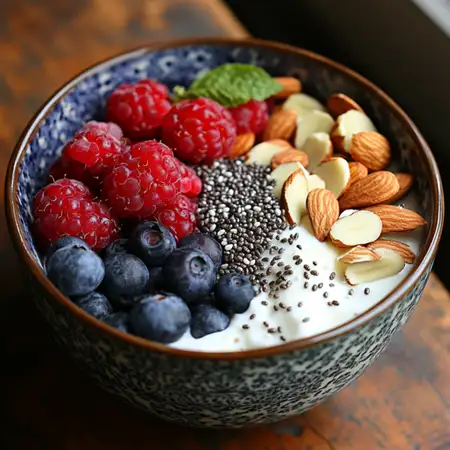Panic stations
Despite feeling very, very scary, panic attacks are not dangerous.
If you are struggling, here’s a little more information. But first, having one panic attack, or a dozen, or a thousand, doesn’t mean you will always be stuck with them. It’s not a life sentence.
What are Panic Attacks?
Panic attacks tend to come without warnings or obvious triggers. There you are, minding your own business and, suddenly, a wave of intense fear or anxiety washes over you. Typical sensations might be:
A panic attack can feel like it’s lasting forever, but typically they peak within a few minutes and rarely last more than half an hour to an hour.
They can be a one-off, isolated events. Some may only have one or two panic attacks in their lifetime, so rare they don’t even know what they are. Some less fortunate souls can have them happen more frequently, in the more troublesome instances they can happen multiple times a day.
What causes a panic attack?
This is different for everyone, and individual causes can vary greatly. But, on a fundamental level, being exposed to extended and/or extreme stress can make us more vulnerable to anxiety, and panic attacks.
Phobias
Specific phobias or triggers can provoke panic attacks.
For example, people with specific fears, such as fear of flying, heights, enclosed spaces (claustrophobia), or social situations (social anxiety), may experience panic attacks when exposed to these feared stimuli. The anticipation or encounter with the phobia can lead to overwhelming anxiety.
Biological Factors and Genetics
Biological factors play a role in the development of panic attacks. For example, people with ADHD can be more prone to anxiety. There’s also evidence to suggest a genetic predisposition to panic disorder, meaning someone with a family history of panic attacks or anxiety disorders may be at a higher risk. Imbalances in neurotransmitters, such as serotonin and norepinephrine, can also contribute to the occurrence of panic attacks.
Stress and Anxiety
And, as mentioned above, we know that high levels of stress and anxiety are often associated with the onset of panic attacks. Stressors can be extended such as ongoing work pressure, relationship issues, financial concerns, or major life changes. Or they can be intense stress like a traumatic event. Either, and particularly both, can contribute to heightened anxiety levels, potentially triggering panic attacks in susceptible people.
I HATE feeling like this!! Can I stop, or at least ease, the ferocity of a panic attack?
Yes. Yes! You can. It is possible.
There are lots of ways to do so. Again, what works will vary on an individual level. It’s a case of trying a few and seeing what works for you. Boosted! lists 19 tried and tested methods, but here are six examples:

Grounding Techniques
Grounding techniques are strategies designed that help us stay connected to the present moment and manage those overwhelming panicky feelings.
Look around you and try to find:
Five things you can see – what/where are they? Why they are there, how did they get there, when did they appear in your life, what do they mean to you?
Four things you can hear – where do they come from, what makes them stand out?
Three things you can feel – rough/smooth, soft/hard, man-made/natural?
Two things you can smell – your deodorant? Your dinner? Your son’s socks?
One thing you can taste – describe the flavours the way a restaurant critic might.

Vergence
This is the coordinated movement of both eyes. Convergence (move eyes inward to look at something close, e.g.: the tip of your finger on your nose) and then swap to divergence (move eyes outward to see something in the *distance). Focus on each for about 5 to 10 seconds.
In the context of easing panic attacks, the emphasis is often on divergence – the outward movement of the eyes which may help put the parasympathetic system back in control, disrupting the escalating cycle of panic.
*An optional add-on, which may make the technique even more effective for some, is following a theme when finding distant things to look at. For example, all starting with R, or all red, or round, and so on.

Shock the senses
Panic attacks often feel like they’re taking you down the same wretchedly familiar path, time and after time. Giving your senses a short, sharp shock can help your body change track.
Smell something sharp and strong, like Deep heat, peppermint or smelling salts. Run an ice cube on the back of your neck. Plunge your face into a bowl of iced water. Lie on a prickly shakti mat. Suck on a lemon or lime or something extremely bitter or sour.
These methods tend to work by shifting the focus of attention, activating different sensory pathways, and engaging the parasympathetic nervous system to counteract the sympathetic “fight or flight” response associated with panic attacks.

Chew gum
If you start chewing something, your poor jangled body is, “What?? You’re eating?? Right now?? While we’re being attacked??” But, by chewing slowly and methodically, your body receives a signal that if you can eat while it is panicking, maybe it’s got its wires crossed and perhaps things aren’t so bad after all.
Even better, blowing gum bubbles is another powerful support. It distracts. It supports deep slow inhales, and long slow measured exhales as you try to blow a b-i-g bubble without it popping.
If you already blow great bubbles, try to master the art of blowing a bubble within a bubble. It’s a wonderful distraction and an, er, interesting skill to have.
If this method inspires you, keep packs of bubble gum with you; house, bag, car, work. Always chew slowly and deliberately, focusing intently on the taste and texture of the gum.

Push a doorway
Push your feet into the corners of a doorway and the backs of each hand pushing against the door jamb. Now imagine the door jamb is trying to squeeze you, and your body is the only thing keeping the space open.
Take a deep slow breath through your nose, hold it and, beginning with your feet; tense every muscle as tight and as hard as you can, pushing your feet into the edge of the door and floor. At the same time, push your hands back against the door frame and stretch your head and neck as high as you can. Keep every muscle in your belly and gut tensed. Hold this tension until the urge to breathe becomes strong. Then relax, slowly, slowly exhaling through your nose. Repeat as needed. The focus here should be on the pressure you’re exerting, the tingle of your muscles, and your breath.
This technique works for well children, but be sure they can reach the door jamb and have enough stretch in their arms to push.

Use a breathing app
You’ll have noticed that when you’re having a panic attack, it can sometimes feel as if you’ve forgotten how to breathe.
Slow, deep breathing (through the nose) activates the parasympathetic nervous system to counter the fight-or-flight response.
When you’re starting to feel “THAT FEELING” coming on, grab your phone and open a breathing app and follow the instructions. There’s usually a moving diagram and a sound to follow, and you can time your breathing to these. They can help slow and even out your breathing, sending a signal to the body that, truly, things are calming down. The focus here should be on the pace of your breath.
I have three apps that I highly recommend. Paced Breathing, Breathwrk, and Othership. (There is a whole section on breathing later in this book).
Please note
Any or all of the above could help you. Few are going to be an instant fix, right out the box, so don’t be disappointed, and dismiss them if they don’t “work” immediately. They take practice, and most become easier to do, and more effective as they become familiar.
Choose one or two, and practice doing them beforehand. This way, when you’re in the midst of a panic attack you know what to do, and know what to expect. You will also have whatever equipment/space/app that you need.
Trying to string two coherent thoughts together when you’re in the middle of an attack is a challenge in itself, let alone taking 5 minutes out to trundle off to YouTube to try to figure out what needs doing.
Is it possible to make ourselves less prone to having panic attacks?
Yes. Absolutely. Panic attacks and anxiety are not a life sentence. It is absolutely possible to reduce the chances of having another panic attack, or even stop them entirely for extended periods of time.
(On a personal note, my last panic attack was over eighteen years ago. I went from having multiple panic attacks almost daily to having a couple a week, then one in a month. Then none.)

Boost your Nutrition
Nutrition plays a crucial role in easing anxiety and panic attacks because the foods we consume directly impact our brain chemistry and overall physiological well-being.
When we choose nutrient-rich foods, we’re giving our brain the building blocks needed to make vital mood regulating chemicals like serotonin and dopamine. Eating properly also helps keep our blood sugar levels steady, preventing those energy fluctuations that can make anxiety worse. So, by paying attention to what we eat, we’re not just fuelling our bodies; we’re also creating a solid foundation for better mental health, making it easier to manage anxiety and keep panic attacks at bay.

Deal with your stress
Effectively managing our stress is paramount in alleviating anxiety and panic attacks. Stress is a potent trigger for heightened emotional responses and physiological reactions, often making feelings of anxiety worse.
When stress is kept in check, the chances of experiencing overwhelming anxiety diminish. Incorporating any of the stress-management techniques outlined in the book, whether through mindfulness, relaxation exercises, or other coping strategies, empowers us, helping us navigate life’s challenges with greater calm and resilience. And contributing significantly to a more stable mental and emotional state.

Practice more Self-care
Self-care is another crucial linchpin in easing anxiety and panic attacks. Taking intentional moments to nurture your well-being becomes a shield against the storm of anxiety.
It’s not just about bubble baths and scented candles (although those can be nice!). It’s a commitment to understanding your limits, setting boundaries, and maintaining healthy habits like regular exercise, balanced diet, adequate rest, proper sleep and prioritizing your mental health. When you consistently engage in self-care, you’re essentially saying to yourself, “Hey, I matter, and so does my peace of mind.” Self-care is not a luxury; it’s a necessity.
Advance reviews
Recent blog posts

Seeking Professional Help
If you have felt any of the symptoms of anxiety or a panic attack for the first time, please go and see your doctor. They’ll arrange tests that will rule out any underlying health conditions that might be contributing to you feeling this way. Sometimes those scary words, underlying health conditions, are genuinely as simple as a basic nutrient deficiency, easily fixed.


 )
)














